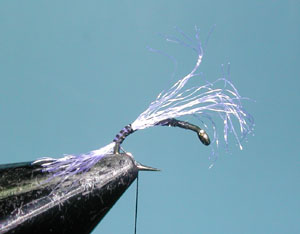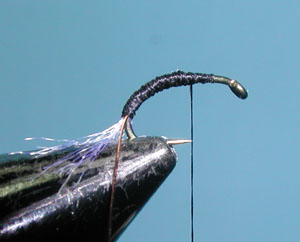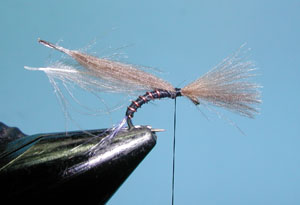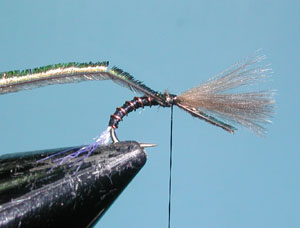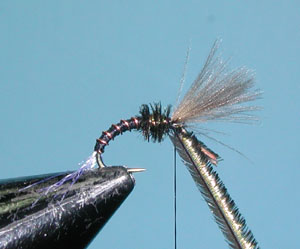Chironomid Suspender – unparalleled float within the film
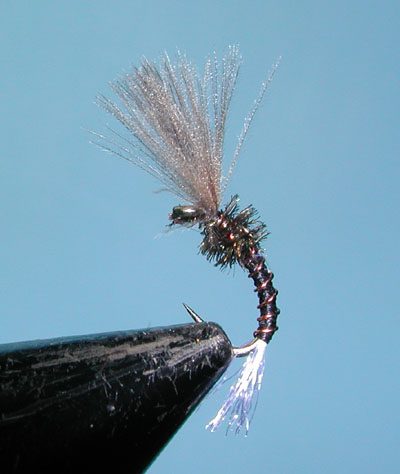
Chironomid Suspender
Tying Instructions
| Materials
to Order Material, click the link |
|
|---|---|
| Hook | TMC 2487 #14-18 |
| Thread | Uni-thread Black 8/0 |
| Body | Uni-thread Black 8/0 |
| Thorax | Peacock Herl |
| Shuck | White Antron |
| Wing | Dark Dun CDC |
| Ribbing | Small Copper Wire |
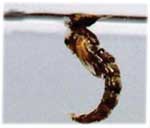
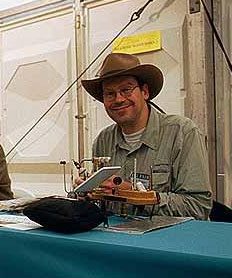
Henk Verhaar
Chironomid Suspender
The Chironomid Suspender is a good emerger pattern when fish are feeding just below the surface. The CDC will allow the fly to float just below the surface. The fly will sit in the water at an angle just like a natural Chironomid. The CDC is often presented as the wing, yet it really represents the gills of the midge.
CDC for Gills
Dutch tyer, Henk Verhaar can vary the floatation of the suspender by varying the amount of CDC he uses. He strips off the barbs of the CDC until he gets the amount he desires, these are attached by their butts about two eye lengths behind the eye with the tips extending over the eye. He doubles back the CDC into a loop wing that is about 1/2 the hook gap, secures the loop, and folds the remaining fibers forward so that they lean against the loop wing. HisCDC Suspender Midgeuses a Red Micro Tubing to mimic the body of the blood midge.
Tyer John Gordon utilizes a biot body with a thread thorax for theBiot Midge Emerger. The biots create a realistic segmentation. It’s simple, effective, and can be tied down to a size 26.
Biots for wingbuds
Colorado tyer, Rick Takahashi included many more parts to his suspender pattern, theHanging Midge. He uses White Poly Yarn for the shuck or tail. The body is a thread body with ribbing for segmentation. This ribbing could be Silver Wire, Colored Thread, or Krystalflash. He uses Orange Goose Biots to represent the wing buds of the midge. These are difficult to find, so I substituted Turkey Biots. Two CDC feathers are used, a darker color for the wingcase and a Tan or White CDC for the wing (Gills). He ties this pattern in Black, Olive, and Gray on a TMC 206BL. The 206BL has a slightly up-turned eye with a deeply curved shank so that the point extends up to the midpoint of the shank for good penetration.
TheColored Emergersare designed by Nate Brumley of Dry Fly Innovations out of Meridan, Idaho. They are simple in their design as most “guide flies” are, yet very effective. Tied on a Daiichi 1270 in sizes #20-22, the extended CDC wing will provide enough floatation to keep this hook suspended within the surface film. The body uses Turkey Biots and thread ribbing with a fine coat of thin Fly Finish.
Variations
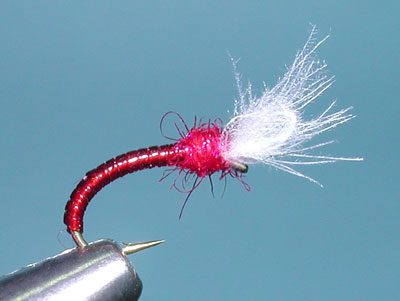
CDC Suspender Midge
| Hook | TMC 2487 #14-18 |
| Thread | Uni-thread Red 8/0 |
| Underbody | Uni-thread Red 8/0 |
| Body | Rust Micro Tubing |
| Thorax | UV Red Ice Dubbing |
| Wing | White CDC |
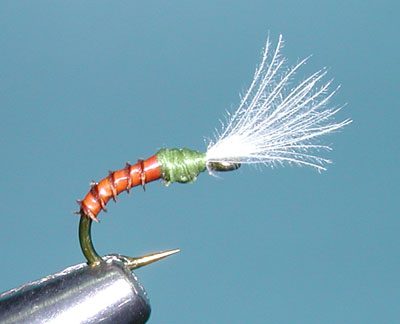
Biot Midge Emerger
| Hook | TMC 2488H #18-24 |
| Thread | Uni-thread Olive 8/0 |
| Body | Brown Goose Biot |
| Thorax | Uni-thread Olive 8/0 |
| Wing | White CDC |
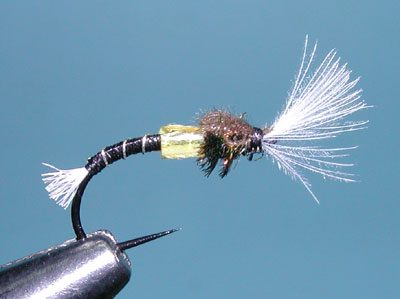
Black Hanging Midge
| Hook | TMC 206BL #14-16 |
| Thread | Uni-thread Black 8/0 |
| Body | Uni-thread Black 8/0 |
| Thorax | Peacock Herl |
| Wingcase | CDC Dark Dun |
| Shuck | White CDC |
| Wing | White CDC |
| Wingbuds | Orange Sulphur Turkey Biots |
| Ribbing | Small Silver Wire |
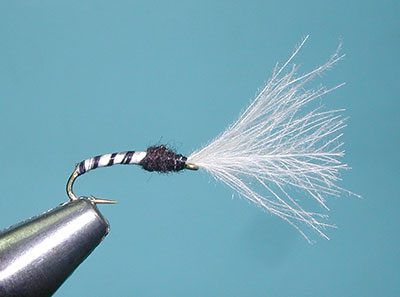
Black Colored Emerger, White Wing
| Hook | Daiichi 1270 #20-22 |
| Thread | Veevus 12/0 Black |
| Body | Turkey Biot White |
| Thorax | Black Superfine |
| Ribbing | Veevus 12/0 Black |
| Wing | White CDC |
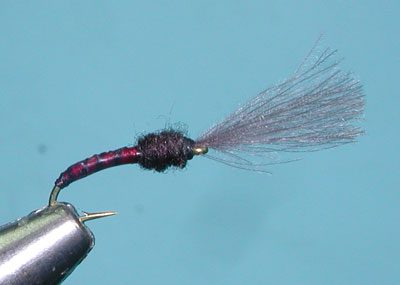
Blood Midge Colored Emerger
| Hook | Veevus 12/0 Black |
| Thread | Uni Thread 8/0 Gray |
| Body | Turkey Biot Red |
| Thorax | Black Superfine |
| Ribbing | Veevus 12/0 Black |
| Wing | Dark Dun CDC |
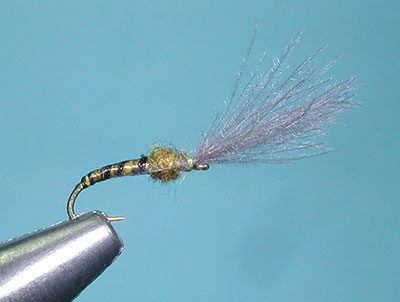
Blue Wing Olive Colored Emerger
| Hook | Daiichi 1270 #20-22 |
| Thread | Veevus 12/0 Black |
| Body | Turkey Biot Olive |
| Thorax | Black Superfine |
| Ribbing | Veevus 12/0 Black |
| Wing | Dark Dun CDC |

